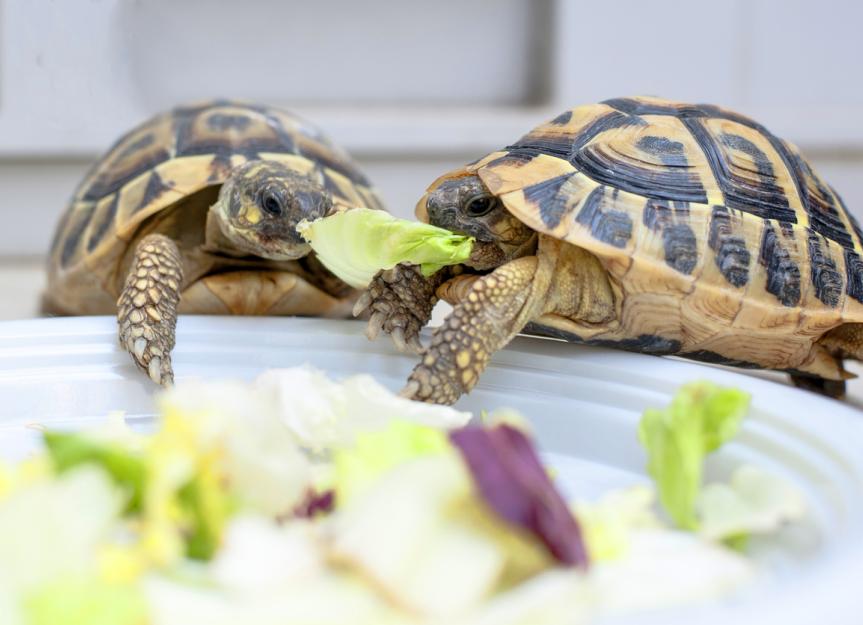Maintaining a balanced diet is crucial for the health and longevity of your pet turtle. As a dedicated owner, you might find yourself pondering a common yet essential question: how many pellets should I feed my turtle? This seemingly simple inquiry opens the door to a broader conversation about the dietary needs of these fascinating reptiles. From the size of your turtle to its age and activity level, various factors influence the ideal feeding regimen.
In this article, we’ll explore vital feeding tips and guidelines to ensure your shelled companion thrives, providing insights that will help you make informed decisions for a happy, healthy turtle. Join us as we navigate through the world of turtle nutrition, debunking myths and offering practical advice that can make all the difference in your pet’s well-being.
Table of Contents
- Understanding Your Turtles Dietary Needs
- Choosing the Right Pellets for Optimal Nutrition
- Determining Portion Sizes Based on Turtle Size and Species
- Supplementing Pellets with a Balanced Diet for Longevity
- Q&A
- Concluding Remarks

Understanding Your Turtles Dietary Needs
Understanding the dietary needs of your turtle is essential for its overall health and well-being. Turtles are omnivores, which means they require a balanced diet that includes both plant and animal matter. When it comes to pellets, it’s crucial to choose high-quality turtle food that contains the necessary vitamins and minerals. Pellets should not comprise the entirety of your turtle’s diet, but they can serve as a vital part of a varied menu. As a guideline, consider including a mix of fresh vegetables, fruits, and protein sources such as insects, worms, or cooked fish to ensure a rich nutritional profile.
In terms of portion size, there are a few factors that determine how many pellets you should feed your turtle. The age and size of your turtle play significant roles. Here are some tips to keep in mind:
- Juvenile Turtles: Feed them pellets that are about the size of their head once a day.
- Adult Turtles: Provide pellets approximately the size of their palm every other day.
- Special Consideration: Monitor their weight and adjust pellet quantities accordingly; it’s essential not to overfeed.
| Age Group | Feeding Frequency | Portion Size |
|---|---|---|
| Juvenile | Daily | Size of Head |
| Adult | Every Other Day | Size of Palm |
Choosing the Right Pellets for Optimal Nutrition
When selecting pellets for your turtle, it’s essential to consider the specific needs of the species you are caring for. Different turtles have varying dietary requirements, which can influence their growth and overall health. Start by looking for pellets that are formulated specifically for your turtle’s species. Aquatic turtles often benefit from high-protein pellets, while tortoises typically thrive on a diet rich in fiber. When researching options, keep the following factors in mind:
- Protein Content: Aim for pellets with at least 30% protein for carnivorous species.
- Fiber Levels: Herbivorous turtles need a higher fiber content, around 15-25%.
- Vitamins and Minerals: Ensure the pellets are fortified with essential nutrients, particularly calcium and vitamin D3.
It’s also wise to consider the size and shape of the pellets. Turtles are more likely to eat pellets that match their feeding habits. Larger turtles may require larger pellets, while smaller species often prefer smaller options. Observing how your turtle reacts to different pellet types can be just as crucial as choosing the right formula. To help guide your choices, here’s a simple comparison of common pellet types:
| Pellet Type | Best For | Protein Content |
|---|---|---|
| High-Protein Pellets | Carnivorous Turtles | 30%+ |
| Vegetarian Pellets | Herbivorous Turtles | 15-25% |
| Balanced Pellets | Omnivorous Turtles | 20-30% |

Determining Portion Sizes Based on Turtle Size and Species
Understanding the appropriate amount of food to offer your turtle is crucial, as it varies significantly depending on the turtle’s size and species. Generally, a good rule of thumb is to feed pellets that comprise about 5% to 10% of your turtle’s body weight. For instance, a small turtle weighing approximately 100 grams could be fed 5 to 10 grams of pellets daily. Keep in mind that species-specific needs can also influence portion sizes. Aquatic turtles may require more protein, while herbivorous turtles will thrive on plant-based diets.
To further simplify your feeding routine, consider the following factors when determining portion sizes:
- Species Type: Different species have unique dietary requirements.
- Age and Growth Stage: Hatchlings and juveniles generally need more frequent feedings.
- Activity Level: Active turtles may burn more calories and require additional food.
You can use the following table to help guide your feeding regimen based on species and size:
| Species | Size Category | Recommended Daily Pellets |
|---|---|---|
| Red-Eared Slider | Small (0-200g) | 5-10g |
| Painted Turtle | Medium (200-500g) | 10-20g |
| Russian Tortoise | Large (500g+) | 20-30g |

Supplementing Pellets with a Balanced Diet for Longevity
While pellets are a convenient staple in a turtle’s diet, they should ideally be supplemented with a variety of fresh foods to promote overall health and longevity. A balanced diet mimics a turtle’s natural feeding habits and ensures they receive essential vitamins and minerals. Consider incorporating the following foods:
- Leafy greens: Kale, collard greens, and dandelion leaves provide necessary nutrients.
- Vegetables: Carrots, bell peppers, and squash can add color and flavor.
- Fruits: Strawberries, blueberries, and melon should be offered in moderation for added vitamins.
- Protein sources: Live or frozen insects, fish, and cooked eggs can enhance their diet.
- Calcium supplements: Crushed cuttlebone or calcium powder to promote strong shell growth.
To ensure a well-rounded diet, it’s also beneficial to vary the types of pellets used. Look for high-quality brands that include a mix of ingredients suited for your turtle’s species. Regularly rotating the food types can prevent dietary deficiencies and keep your turtle engaged at mealtime. Use the simple table below to track your turtle’s feeding schedule and balance between pellets and supplementary foods:
| Day | Pellets | Supplementary Foods |
|---|---|---|
| Monday | 1/2 Cup | Leafy Greens |
| Tuesday | 1/2 Cup | Vegetables |
| Wednesday | 1/2 Cup | Fruits |
| Thursday | 1/2 Cup | Protein |
| Friday | 1/2 Cup | Calcium Supplements |
Q&A
Q&A:
Q1: How do I determine the right amount of pellets to feed my turtle?
A: The right amount of pellets for your turtle largely depends on its size and species. A general guideline is to feed adult turtles around 1-2% of their body weight in pellets daily. For juveniles, you can offer pellets based on the size of their shell and their expected growth. Always observe your turtle’s behavior and adjust accordingly; they should eat the pellets within 15-20 minutes.
Q2: Are all turtle pellets the same?
A: Not all turtle pellets are created equal! It’s essential to choose high-quality pellets formulated for your turtle’s specific dietary needs. Aquatic turtles benefit from pellets containing high protein, while terrestrial species may require more plant-based ingredients. Check the label, and look for ingredients that reflect a balanced diet for your type of turtle.
Q3: Can I mix pellets with other foods?
A: Absolutely! A well-rounded diet is crucial for your turtle’s health. You can mix pellets with fresh vegetables, fruits, and occasional protein sources like insects or cooked fish, depending on their species. Just be mindful of the quantity to avoid overfeeding, which can lead to health issues like obesity.
Q4: How often should I feed my turtle pellets?
A: Feeding frequency can vary by age and species. Generally, juvenile turtles benefit from feeding every day, while adult turtles can be fed every other day. Ensure that the feeding schedule compliments your turtle’s natural behavior and dietary needs.
Q5: What signs indicate I might be overfeeding my turtle?
A: Signs of overfeeding include noticeable weight gain, lethargy, and a decrease in activity levels. If your turtle begins to develop a round, swollen appearance or if it’s spending more time basking rather than swimming, it might be time to reevaluate their pellet intake.
Q6: Can I rely solely on pellets for my turtle’s diet?
A: While pellets are a convenient source of nutrition, they should not be the sole component of your turtle’s diet. Variety is key! Incorporate fresh foods, such as leafy greens and occasional treats, to ensure your turtle receives all the necessary vitamins and minerals. Remember, a balanced diet promotes a long and healthy life!
Q7: What should I do if my turtle refuses to eat pellets?
A: If your turtle is turning up its nose at pellets, try offering a mix of fresh foods to entice it. Sometimes, turtles can be picky eaters, especially if they are accustomed to a varied diet. If the refusal continues, it might be worth consulting a veterinarian to rule out any health issues.
Q8: How can I tell if my turtle is healthy?
A: A healthy turtle is active, alert, and has a clear shell with bright eyes. Healthy turtles will actively swim, bask properly, and have a well-formed shell without any signs of undue swelling or discoloration. Monitoring their eating habits, weight, and general behavior are excellent ways to keep track of your turtle’s health.
Feeding your turtle involves more than just pellets; it’s about creating a balanced diet that satisfies their nutritional needs. By following these guidelines and observing your turtle’s behavior, you can ensure a happy and healthy life for your shelled companion!
Concluding Remarks
understanding how many pellets to feed your turtle is crucial for their health and happiness. Every turtle is unique, and factors such as age, size, and activity level all play a role in determining the right portion size. By following the guidelines outlined in this article and paying attention to your turtle’s responses, you can ensure they receive the proper nutrition to thrive. Remember, feeding is more than just a routine; it’s an opportunity to bond with your shelled companion. Keep experimenting with variety and monitor their health, and you’ll find that the right diet transforms not just the way your turtle looks, but also how they feel. A well-fed turtle is a happy turtle, so take the time to nurture your pet, and watch them flourish in their aquatic world. Happy feeding!















